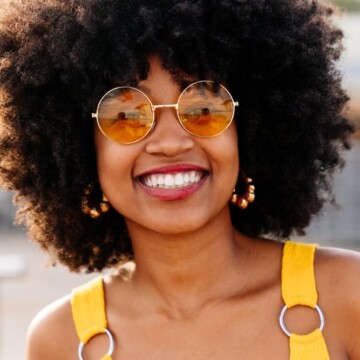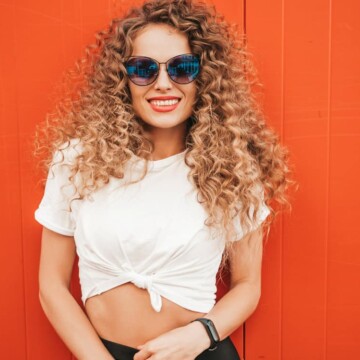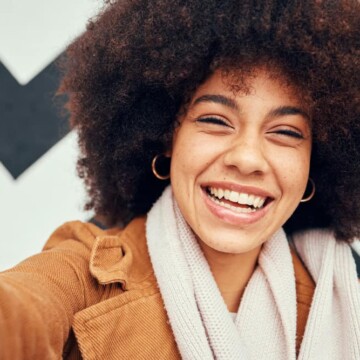
When I started using henna, I thought it was the best thing I'd ever used on my hair. My hair felt stronger after using it, and I associated that feeling of thickness with the properties of pure henna.
This feeling of thicker, stronger hair strands is why many natural women place henna and protein treatments on the same level.
I will share more about my personal experience using henna dye in a moment, but first, let's dive into the purpose and benefits of using henna extracts on your natural hair.
Table of Contents
- 1 What Is Henna?
- 2 Does Henna Condition Hair?
- 3 We Only Recommend Using 100% Pure Henna
- 4 Can Henna Loosen Your Curl Pattern?
- 5 Is the Loss of Your Natural Curl Pattern Reversible?
- 6 Does Henna Reduce Hair Shedding?
- 7 Does Henna Strengthen the Hair?
- 8 Does Henna Hair Dye (Coloring) Eventually Fade?
- 9 Is Henna Safe or Toxic?
- 10 Does Henna Cause Cancer?
- 11 Henna Hair Dye vs. "Chemical" Based Color Treatments (Common Hair Coloring Alternatives)
- 12 Kira's Favorite Henna Recipes
- 13 Does Henna Cause Gray Hair?
- 14 Henna vs. Protein Treatments: Kira's Results
What Is Henna?
Henna is a natural plant-based hair dye that has been used for centuries to color hair (e.g., henna hair dyes) and skin (e.g., body art or mehndi in India). It is made from the leaves of the henna plant, which are dried, powdered, and mixed with liquid to create a paste that can be applied to hair.
Henna is known for its ability to provide rich, long-lasting color while also nourishing and conditioning the hair. It is a great alternative to chemical hair dyes, especially for those with curly hair, as it can help enhance curl definition and reduce frizz.
The henna that's used for hair treatments is usually in the form of a relatively fine powder-like substance that contains lawsone. Lawsone, a hennotannic acid, is a reddish, orangish dye that comes from the leaves of the Lawsonia inermis or the mignonette tree.
Does Henna Condition Hair?
One report from the International Journal of Cosmetic Science and another report from the Society of Cosmetic Chemists suggest that henna is not a penetrative substance.
Instead, it is able to work by attaching itself (outside of the hair) to the hair cuticle. Generally, a hair conditioner should add some level of moisture to the hair.
Conditioners are also used to keep the hair soft.
So, can henna be used as a conditioner?
No, according to 'The Art of Hair Coloring" by Jacki Wadeson, many hairstylists report dry hair after using henna. This is why so many naturals add a conditioning agent to their henna recipes.

We Only Recommend Using 100% Pure Henna
The best henna to use is 100% pure henna. Sometimes retailers will offer BAQ henna or “body art quality” henna. Just be sure that it's 100% pure with no additives.
It’s important to note that henna does not come in a rainbow of colors, and the color deposits are not always predictable. Pure henna will deposit some variation of a red, yellowish orange on your hair.
However, the shade of the color deposit depends significantly on your natural hair color.
When buying henna for your hair, you should be suspicious of compound henna or other forms of the product that have been altered.
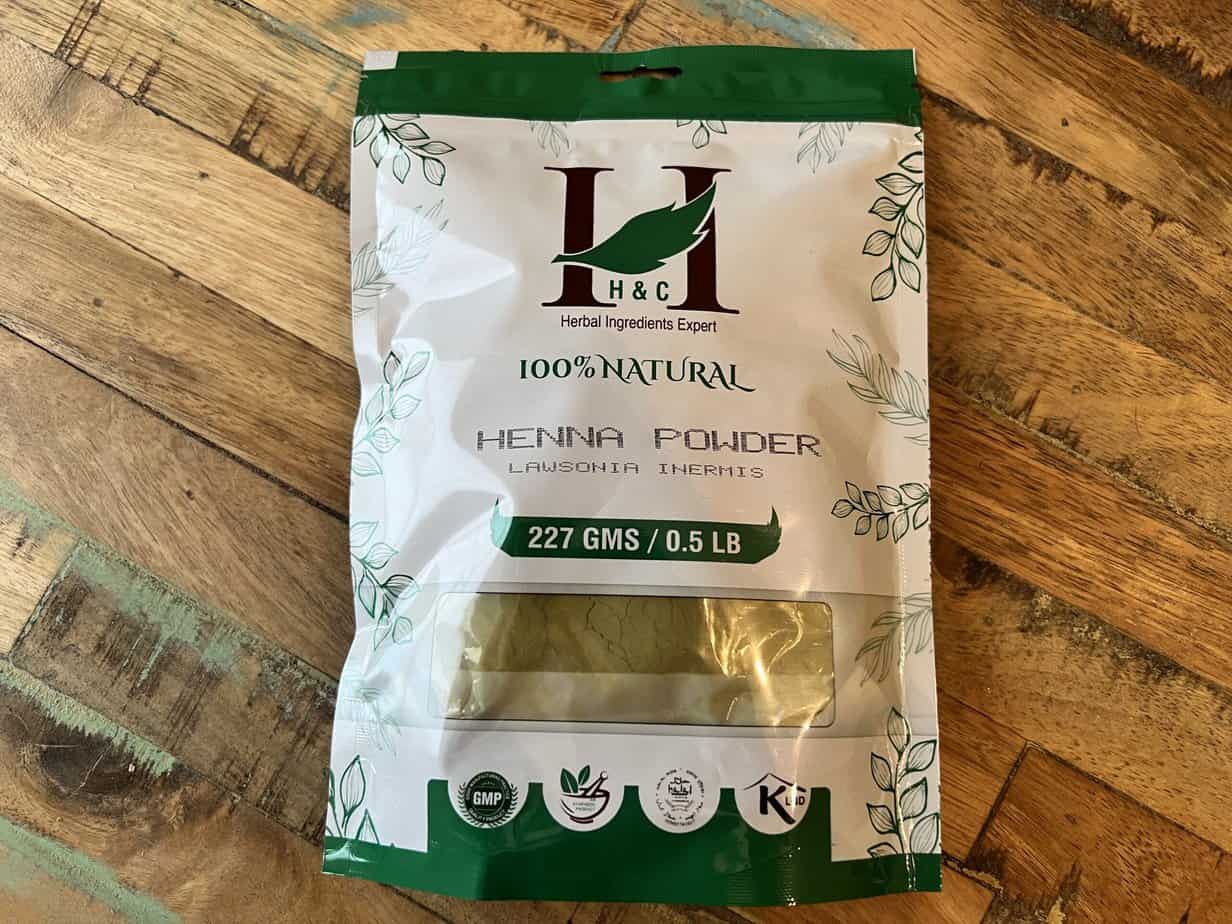
H&C envisions providing a wide range of authentic Indian herbs and Ayurveda products, which are made with 100% natural ingredients, without any addition of chemicals or preservatives. All of their products are made using sustainably sourced and quality-tested ingredients.
Some "special formulations" will promise to provide you with a specific color other than a shade of red. Pure henna (from dried leaves) should be a finely ground powder that is green in color.
It should not have sticks, sand, dirt, or any debris included. I've purchased henna that required substantial sifting in the past and decided not to use it on my hair (more about that later).
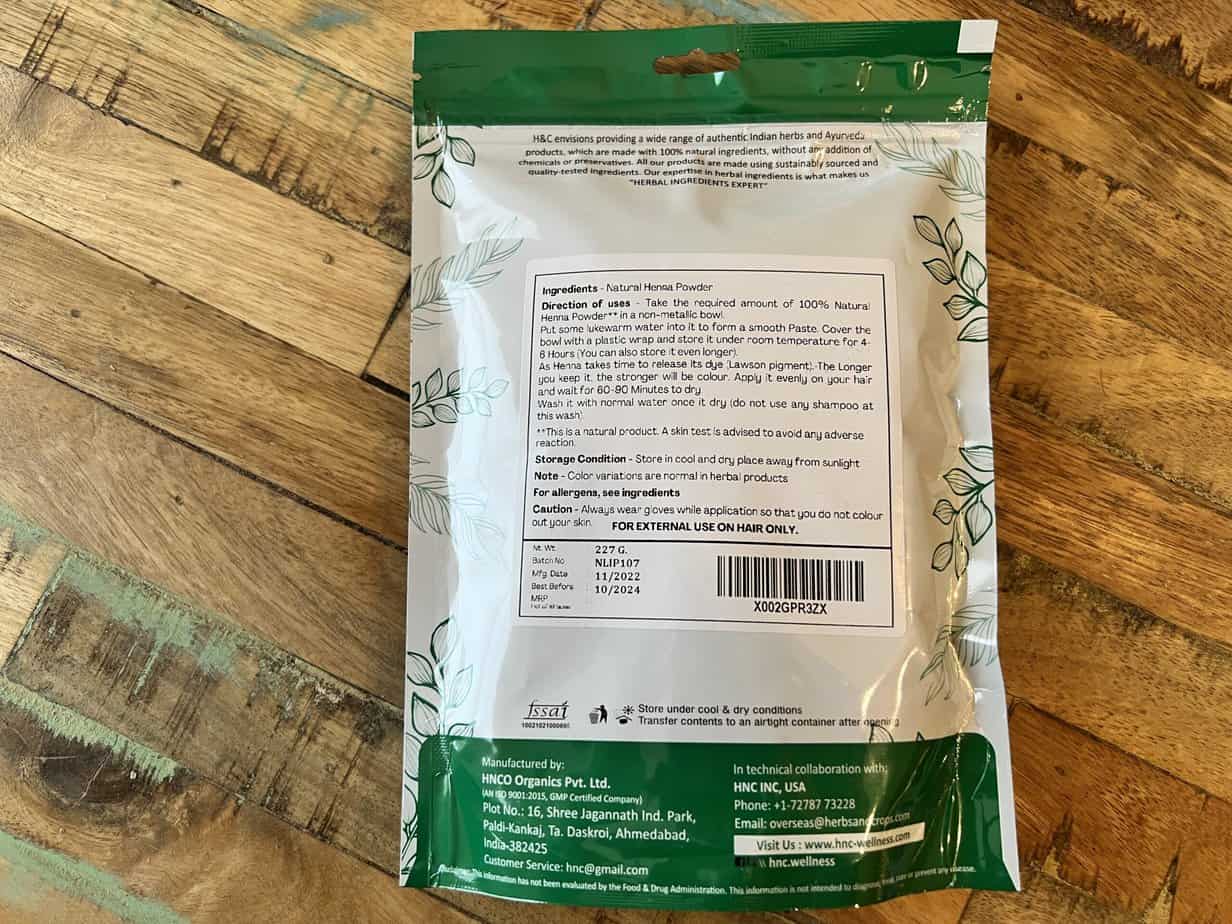
Likewise, if you have purchased henna products that don't seem pure and require sifting, we don’t recommend using the product. It could include unknown additives and debris, which may be difficult to rinse from your hair.
If you decide not to return it to the retailer and use it anyway, be sure to sift the powder several times before using it on your hair.
Don’t be deceived by the product's label or slick marketing, even if the ingredients on the label don't list anything other than henna.
Be cautious, and don't take unnecessary chances with your hair and skin.
Can Henna Loosen Your Curl Pattern?
Several women with natural hair have reported that henna gradually relaxes their curl pattern after continuous applications.
In addition to some people experiencing a "loosening" of their curl pattern, there have also been reports of the curls clumping together after repeated applications.
People with looser curl patterns, for example, type 2 and type 3 hair types, can experience significant changes in their natural curl patterns.
Anecdotally, this effect doesn't appear to have a substantial impact on type 4 hair types. So, henna can change the thickness of your hair and your natural curl pattern.
The looser curl pattern often makes your hair appear to be longer. Depending on your personal hairstyling preferences, this might be good or bad news.

Is the Loss of Your Natural Curl Pattern Reversible?
In other words, will your hair revert back to its natural curl pattern after washing your hair? My theory is primarily based on the weight that henna exerts on your hair strands.
Lawsone, the red-orange hair dye contained in henna, is a permanent dye, so it's unlikely that the loosened curl pattern is reversible.
Furthermore, I think the loosening of your curl pattern will also depend on the number of times you’ve used henna and the level of moisture in your hair.
As your hair carries more weight, you'll experience looser curls. More henna applications lead to more weight, and the moisture (weight) in your hair translates to looser curls.

Does Henna Reduce Hair Shedding?
Henna does not have an impact on the shedding of your hair. This is because the shedding process starts from the (bulb) root of the hair.
However, it's possible that shedding will occur while you're manipulating your hair, whereby some strands of hair break off. Otherwise, no scientific proof links henna to hair shedding.
Does Henna Strengthen the Hair?
There is no scientific proof (i.e., a study) showing that henna can make your hair stronger. However, two critical observations have been made regarding the effect of henna in strengthening the hair:
- Henna can lead to dry hair. These anecdotal reports are often confirmed by hairstylists and do-it-yourself users. Dry hair does not have adequate elasticity; hence the hair will break more easily.
- Henna can increase the hair's thickness, as it attaches itself to the hair cuticle and creates a loosening effect weighing down the hair. As the hair becomes thicker, the hair should also become stronger. This should end up minimizing hair breakage.
However, these anecdotal benefits of henna will remain to be speculations unless someone carries out strength tests.

Does Henna Hair Dye (Coloring) Eventually Fade?
Henna is a permanent hair dye that deposits itself on the outside of the hair cuticles. There have been numerous reports of the hair becoming dry after applying henna; however, this can be mitigated through deep conditioning treatments.
Henna doesn't really fade, although it appears to fade when applied as body art. In reality, what happens is the outer layer of the skin, known as the epidermis, occasionally renews itself.
As the skin renews itself, the henna that's residing on the outer surface of the skin appears to fade as your dead skin cells flake away.
Similarly, the outer layers of the hair cuticle are constantly subjected to water, heat, combing, sunlight, and other environmental elements, progressively damaging the hair cuticle and causing layers to flake away.
Consequently, if you only do one henna application per year, it will gradually fade off as a result of the outer cuticle layer damaging and falling off. To make the fading less noticeable, you need to reapply the henna treatment periodically.
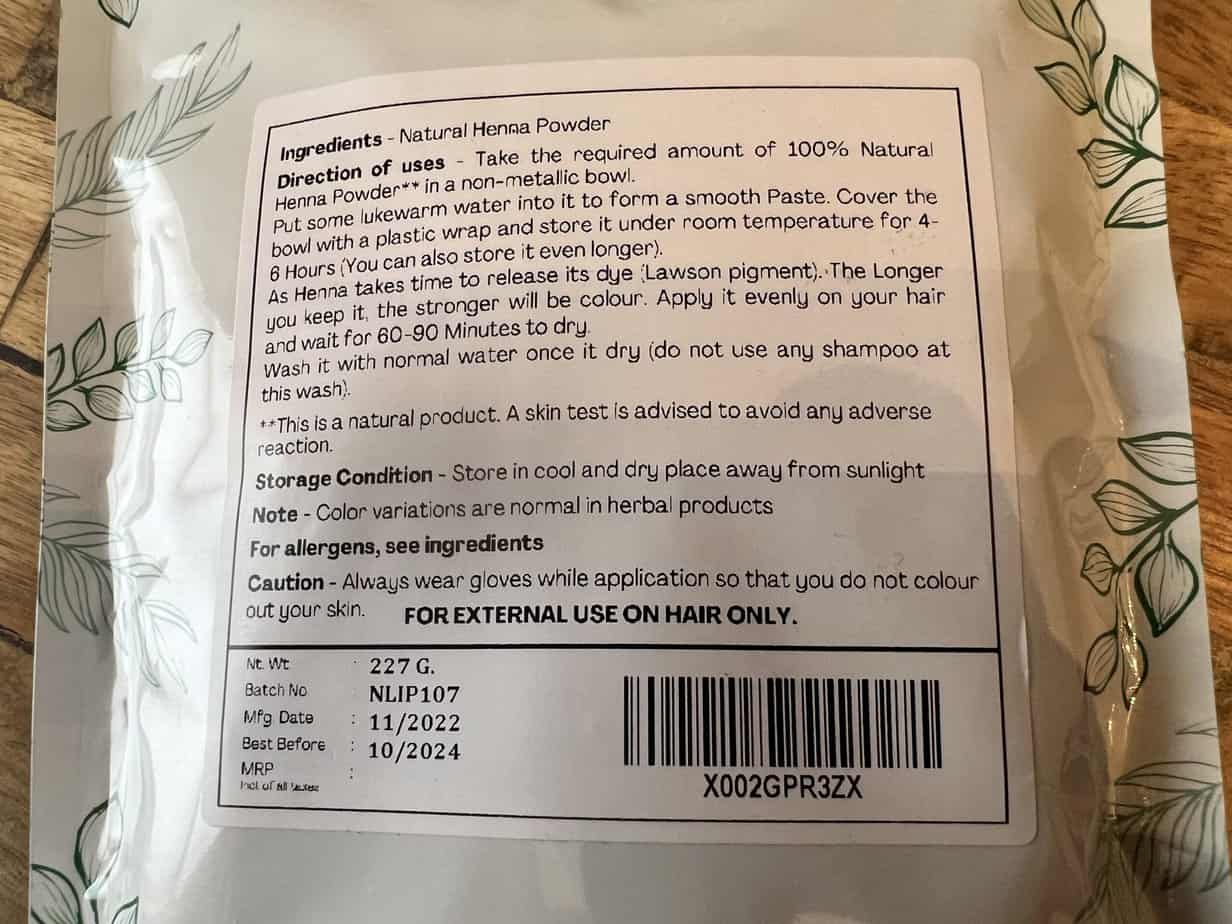
Is Henna Safe or Toxic?
There’s no doubt that henna has been used for centuries, primarily by Asian women. Consequently, henna is often regarded as safe for use on your hair and skin.
However, there are some serious concerns about this product.
According to the U.S. Department of Health and Human Services, the U.S. Food and Drug Administration (FDA) has approved the use of henna as a hair dye. Although, it does not recommend direct application to the skin.
It strongly disapproves of the use of henna for body decoration in a widespread practice known as Mehndi. If you are planning to apply henna on your skin, there is a risk of allergic reactions and scarring of the skin if you don't use pure henna.
The FDA indicates that it has received several reports of skin injuries caused by products that are marketed as henna and “black henna.”
The Scientific Committee on Consumer Safety (SCCS) stated that there are no safe levels for lawsome, a chemical compound found in henna. This chemical can mutate certain cells.
However, the FDA has not revised its decision to approve henna. I'm speculating; however, this is likely because henna has a long history of being safe for users in Asia.
Plus, it's important to note that the FDA only approves the use of pure henna for use as a hair dye, not for any other purpose.

Does Henna Cause Cancer?
The use of henna is often controversial since some reports indicate that it can cause certain human cells to mutate. Plus, according to the National Cancer Institute, there are concerns that permanent hair color is a potential cause of cancer.
If you are considering using henna, you will find contradicting reports on the benefits and risks. Therefore you need to do in-depth research to make an informed decision.
Hopefully, this article will be very helpful as you make the best decision for you.
Henna Hair Dye vs. "Chemical" Based Color Treatments (Common Hair Coloring Alternatives)
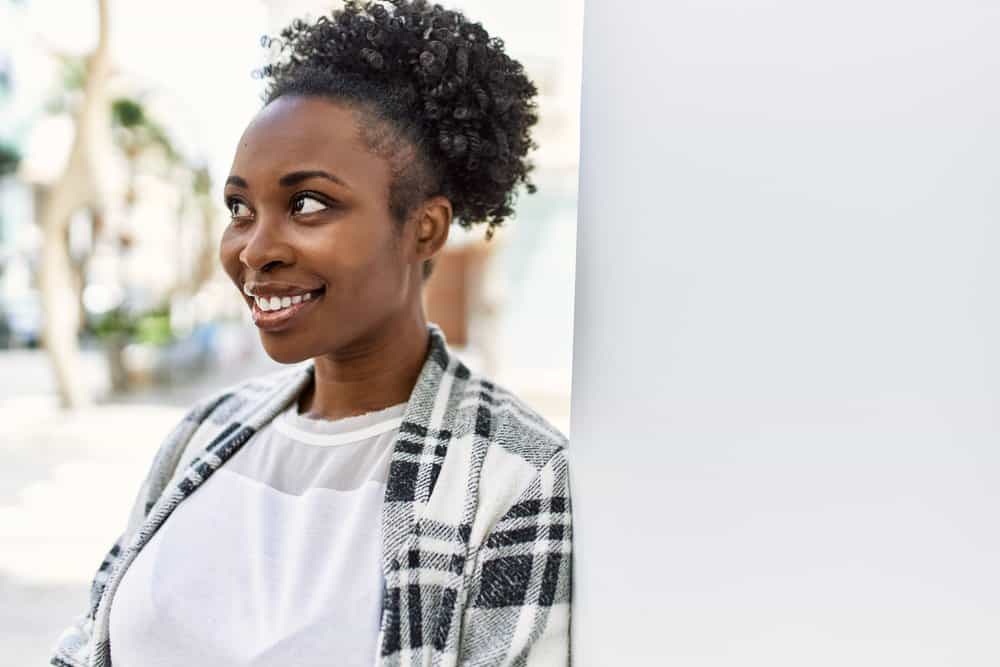
Temporary Hair Color Treatment
Temporary hair color usually comes in the form of a rinse, gel, or mouse. Due to the dye’s large particles, it is not usually able to penetrate the hair cuticle.
The only way temporary hair dye can potentially penetrate the cuticle is if your hair is already treated with chemicals, meaning it's relaxed or bleached.
If none of those conditions apply to you, the dye will normally wash off pretty quickly.
Semi-Permanent Hair Color Treatment
Semi-permanent hair color lasts longer than temporary hair color, usually between 4 to 6 weeks. The main purpose of this hair dye is to darken the hair, usually up to three tones darker than the natural color.
The dye has slightly smaller particles than the temporary hair color, meaning that it is able to penetrate the cortex and attached to the cuticle. Semi-permanent hair color can easily cover gray hair.

Permanent Hair Color Treatment
Permanent hair color requires a chemical used to lift the hair cuticle, in most cases ammonia.
The second step involves the application of the dye, which enters the cortex and undergoes oxidation to allow the color to develop while at the same time attaching the molecules to the cortex.
The new color is usually permanent, but the whole process can damage your hair due to lifting the cuticle during the process.
Hair Bleaching Treatment
Hair bleaching is to lighten the color of your hair instead of darkening it. To achieve it, you need to apply hydrogen peroxide or proxy to the hair.
The hydrogen peroxide disperses and dissolves melanin, the pigment that gives your hair its color. Bleaching can also make hair more fragile since the hair cuticle is affected by the chemical.

Henna Hair Color Treatment
Henna works differently from other dyes because it's strongly attracted to keratin (the hair's protein). However, it's thought to also deposit itself on the hair cuticle like some other hair color options.
If you visit a hairdresser, they will probably use more than one of the above methodologies to achieve your desired hair color.
To mitigate issues with hair breakage, cuticle damage, and dryness during the hair coloring process, the hair usually needs to undergo deep conditioning.
Kira's Favorite Henna Recipes

Henna Hair Rinse Recipe
Ingredients:
- 1 tablespoon of Jamila Henna (commonly referred to as body art quality henna)
- ½ gallon warm water
Directions:
Dissolve 1 tablespoon of henna in ½ gallon of warm water. Depending on the length of your hair, you may need more or less water.
Once the henna has dissolved completely, pour the henna rinse onto your hair. Co-wash and style as usual.
The hair coloring will build up over time as henna coats the outside of the cortex.
Does Henna Cause Gray Hair?
It's very unlikely that henna can cause gray hair, although henna is a type of dye that coats the outside of your hair strand.
Henna does not affect the follicles or hair strands' inner cortex, where the color of your hair originates.
For people with lighter hair colors, the effect of henna is more noticeable, producing colors in the yellow, red, and orange spectrum.
Individuals with darker hair colors are will experience a less noticeable change in hair color while using henna.

So, what causes gray hair?
Scientists are still researching the exact causes of gray hair, although it appears that race and heredity are key factors.
According to the Journal of Investigative Dermatology, over 50% of people below 30 years of age are affected by premature hair graying (PHG). We've written extensively about the causes of gray hair in the past; click here to learn more about gray hair.
- Is Henna Bad for Your Hair?
- Shikakai for Hair
- Benefits of Lemon on Hair
- Amla Powder for Hair Benefits
Henna vs. Protein Treatments: Kira's Results
I recently purchased two boxes of Red Raj 100% organic henna powder and had planned to use the henna as I usually do on a monthly basis.
One of our community members informed me that she found twigs in her henna and that I might need to sift the henna again before I use it.
When I opened the pack, it was not a well-sifted box, as the henna had little spikes in it. My regular Jamila Henna is always a consistently smooth texture.
I sifted the Red Raj henna, but all the time, my concern grew as I am very protective of my hair. Nevertheless, my feelings never settled, so I decided to wait until I felt better about it.
The fact that I didn’t use the henna on my hair left room for me to experiment with something new. I had been researching protein treatments for a few months, and I felt that it was time. So, I purchased Aphogee Two-step Protein Treatment.
Here is what I did step by step:
I detangled my hair and created 14 large chunky twists. Then I shampooed my hair with Hydratherma Naturals Moisturizing Boosting Shampoo instead of Aphogee Shampoo for Damaged Hair.
Because the protein treatment is liquid, I put the liquid protein in a spray bottle for easy application. I covered myself with my "henna robe," an old, worn, yellow bathrobe, and draped a towel across my shoulders.
Using the towel, I gently applied pressure to the ends of my twists to stop my hair from dripping before the protein application.
Starting in the back, I untwisted each twist and sprayed the twist with the protein treatment until it was thoroughly saturated.
Immediately after spraying the protein on my hair, I rubbed my hair in a downward motion to ensure all the strands had protein on them. Once the strands were saturated, I used a wide tooth comb and combed through my strands once or twice.
If your sections start to become sticky, do not comb through them; just move on to the next section of hair.
Continue to take down each twist, spray each section, work through the sections with your fingers, and comb through it (if your hair becomes sticky before you pass through with your comb, do not comb through it and move on to the next section).
I own a hooded dryer, which is my preferred hair dryer, but you can also use a hand dryer. I've done protein treatments several times with a handheld dryer, and they work just fine.
When using a hand-held dryer, use a setting that's low and warm. When drying my hair, I held the dryer approximately 8-10 inches from my hair.
It took roughly 45 minutes to 1 hour before my hair was completely dry. Feel free to take short breaks if needed.
Once my hair was completely dry, it felt really hard as if I had a finger wave hairstyle that was hardened with gel.
I then got in the shower and allowed the warm water to rinse away the protein treatment.
Once all of my hair became pliable and the strength of the streaming water was able to move my hair, I gently used my hands to feel my hair. I used my hands to continue working the water through my hair for thorough rinsing.
I was pleasantly surprised by the softness but confused because it wasn’t “hard.”
After rinsing, I immediately applied the Aphogee Balancing Moisturizer with a plastic bag for 15 minutes. I rinsed my hair thoroughly with warm water and styled my hair in twists.
Seriously, ladies, that is all that I did; and the way my hair felt and looked was mind-boggling. Honestly, what I expected was for my hair to feel firm and thick as it does with henna or hard, like some of the other ladies have experienced, but it was just the opposite.
My hair was, and still is a week later, very soft and shiny. Heck, I would like to say that my hair is silky. Although, I want to wait until I do another treatment to confirm before I make that claim.
I never expected these results, especially from the Aphogee Two-step Protein Treatment – because it’s considered a hard, heavy protein treatment.
Henna has never given me these types of results, although it's really used for different purposes. Aphogee Two-step Protein Treatment is in a class of its own.


